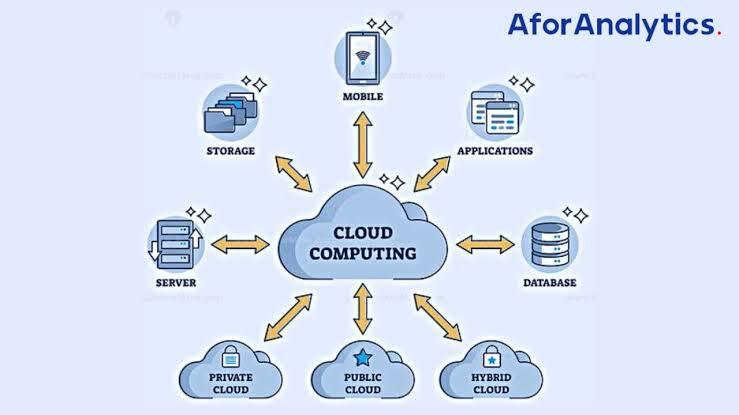In today's world, technology is changing and improving rapidly. One of the exciting aspects of that is cloud computing.
■ What is cloud computing?
Cloud computing refers to providing computing services, such as servers, storage, databases, networking, software, analytics, and intelligence, via the Internet (known as "the cloud"). It enables faster innovation, offers adaptable resources, and leverages economies of scale. This is a type of technology that provides the user with all the computing power they require without active management.
■ Benefits of Cloud computing.
Cost savings: Upfront funding is not required as hardware and infrastructure isn't needed.
Due to its pay-as-you-go policy, no need for extra maintenance fees.Scalability: The users can scale up or down depending on what is required therefore providing room for easy operations.
Accessibility: This service can be accessible from anywhere in the world as long as you have an internet connection.
Reliability: Companies that provide these services often use the best and most advanced technological system in providing the best experience at any time and they provide large infrastructure.
Security: Leading cloud-providing companies apply advanced and almost impenetrable security measures to protect their data and that of the users.
Data protection: Cloud companies provide a data protection plan by providing automatic updates that keep your data safe in case of data loss.
Collaboration: Cloud platforms allow users to work together at the same time to improve productivity and teamwork.
■ Deployment models.
In the context of cloud computing, a deployment model pertains to the particular method or organization of cloud resources and services provided for users.
It defines how cloud computing infrastructure is laid out, accessed, or who can use it.
They are 4 types of deployment models in cloud computing.
- Public Cloud:
As evident from its name, public clouds are accessible to the general public, and data is generated and stored on servers managed by third-party providers.
Service providers own and watch over the server infrastructure, managing and combining resources, eliminating the need for user companies to purchase and maintain their hardware. These providers offer resources as a service, which can be either free or paid which is done over the internet.
Examples include Microsoft Azure and Oracle.
- Private cloud: Unlike the public, the private deployment model is a type of deployment model where the resources and services are specifically for one organization. They can be offered over the Internet or through internal private networks. They are not shared with other users or organizations. This provides higher security and easy customization. This type of deployment model is suitable for organizations that want general control over their resources. Examples include Microsoft, Ubuntu, and HP Data Centers.
- Hybrid cloud: The hybrid cloud model brings together features from both public and private clouds, enabling organizations to merge their private cloud with public cloud services, resulting in a relative and adaptable computing environment. Hybrid clouds provide the benefit of keeping important data and applications in a private cloud while utilizing the scalability and cost-effectiveness of the public cloud for less critical tasks. Examples include Microsoft Azure.
- Community Cloud: The Community Cloud development model allows different organizations with similar interests to access the service. The community cloud deployment model involves multiple organizations with similar interests, such as those in the same industry or having specific regulatory needs, sharing cloud resources. This enables collaboration, resource combination, and cost-sharing among the community members while keeping their cloud separate from the public cloud. An example includes Aws lambda and Skype.
■ Service Models.
In cloud computing, the three primary service models guide the extent of control and accountability that users possess in managing cloud resources. This structure determines the level and type of structure accessed by the end users. They are :
- Infrastructure as a Service (IaaS): This is a computing infrastructure operated over the Internet. The cloud handles the infrastructure while the user manages the application and data. It gives the user total control over the hardware that runs your application including servers, networks, operating systems, and more. Examples include AWS EC2.
- Platform as a service (PaaS): PaaS, as a cloud computing service model, provides an adaptable and scalable cloud platform for developing, deploying, running, and managing applications. It provides you with tools, frameworks, and equipment to manage and deploy your apps while the cloud platform maintains the infrastructure and operating system.
- Software as a Service (SaaS): This service model allows users to access software applications over the Internet without installing them on their local devices. Using the SaaS model, the software is stored on external servers, managed and updated by the service provider, and accessible to users through web browsers, mobile apps, and APIs.
CREDIT: All images were downloaded from Google.













Top comments (0)